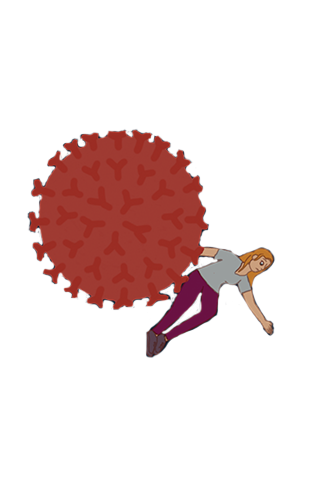During a seemingly stressful afternoon three months ago, my English teacher proposed a short meditation before starting our class. I was immediately giddy at the thought of an unexpected nap-time, and without any further introduction to the meditation process, my teacher cued a soothing soundtrack and turned off the lights. Despite my initial skepticism, I fell into an unanticipated, worry-free state.
Ever since that humbling December afternoon, I craved the same tranquil experience that momentarily freed me from the ongoing pangs of to-do lists and personal troubles. I attempted in-home meditation for several weeks until I realized that I was missing an important element in the yogi mind reshaping process: an added physical challenge.
This desire led me to the practice of Vinyasa Flow Yoga. This type, like most forms of yoga, challenges practitioners to synchronize breath control, movement, ascetic discipline and an overall attention to spirituality. In this individual sport, one completes several moving postures (similar to a choreographed dance) and repeats these movements while consequently engaging the mind’s ability to memorize posture sequences.
In terms of relieving stress, according to Yoga Journal, this exercise releases muscle tension, nourishes the body with a fresh blood supply of oxygen and other nutrients while also boosting your overall happiness. Initially, I thought this description sounded like a free ticket to Happy-Stress-Free-Land, but after months of arduous practicing I have realized that these benefits only arise from persistently working to improve.
This is an activity that all students, including myself, can participate in. Most recently, I have found that yoga is the best option when trying to escape from gruesome homework loads for an hour or two. Upon returning to my work, I am often more focused than I was prior to practicing.
Yoga is not only both meditation and exercise, but it is truly fun—there is no better rudimentary word to describe it. Whether it be the constantly moving Vinyasa Flow Yoga or a slower-paced session, I implore students and adults of all ages to attend at least one class. You won’t recognize immediate mental and physical change, but like anything else, one must consistently practice over time in order to reap yoga’s full benefits.
When we’re under a lot of stress we often dwell on what we need to do in the future, such as studying for that one dreaded unit test and executing the unavoidably awkward plan that is asking your date to the Turnabout dance. Instead of letting your thoughts wander as you do yoga, think about what your body and breath are doing in this moment. Ultimately, this in-the-now mindset is what is going to lessen any anxious thinking and eventually propel you to a clearer state of mind.
Right now, I’m still slightly skeptical that I’ll ever reach the supreme yogi state of enlightenment: moksha. But to this point in my practice, I have already recognized significant mental and physical improvements. I am more patient in my relationships and have also gained various insights on personal betterment, all attributed to my progressing yogi mindset.






